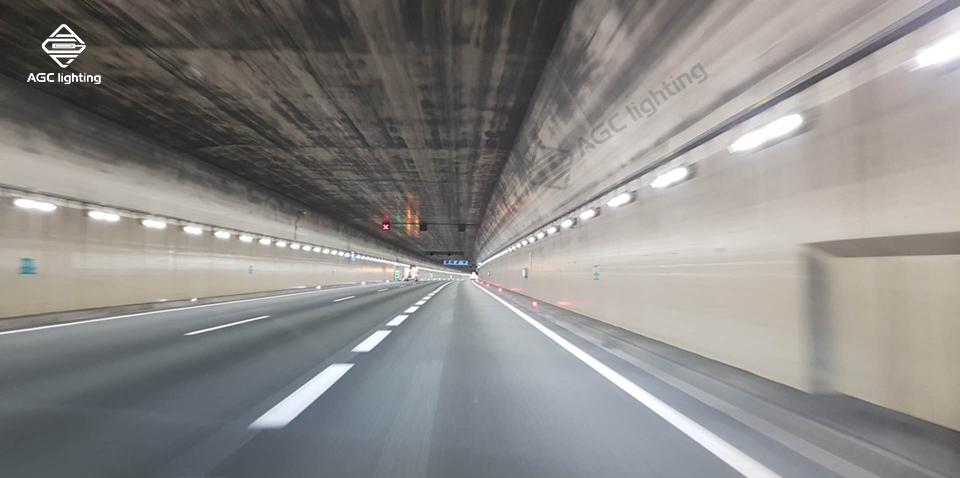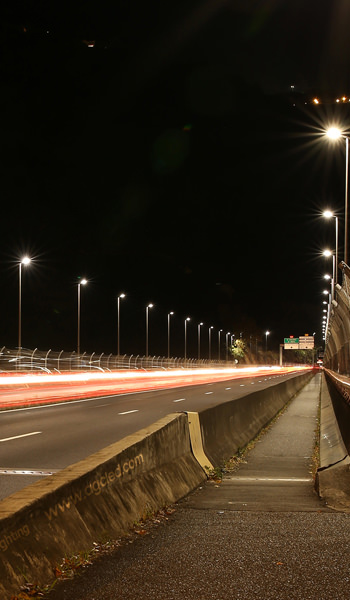
For every stage of a tunnel lighting project, from the simplest to the most complex, there are certain requirements and standards that need to be followed to ensure a comfortable lighting effect provided for drivers. A quite big difference between tunnel lighting and ordinary street lighting is when drivers enter or get out of the tunnel, visual brightness changes will take place here. So it is necessary to adjust the illumination. In fact, lighting requirements in tunnel lighting projects may vary based on different zones of the tunnel.
Here is a checklist of important factors in the field of tunnel lighting:
Tunnel Lighting Standards
To get started, know the local regulations of the country for tunnel application. The gathered information will show the right lighting design to implement. This is to avoid further issues with the local standards.
Tunnel Lighting Design
Tunnel lighting considers the eye adaptation of drivers from natural light. There must be a transition of luminance level from highest to lowest to give eyes time to adapt. Project engineers will follow the 40-meter length rule for more efficient lighting.
Tunnel Lighting Stages
Within the 40-meter length of standard tunnels are five tunnel zones. Each requires a different luminance level, as follows:
Access Zone
In this zone, visual contrast could happen for drivers’ eyes in adapting to a darker place. It has to be brighter than the outside tunnel to guide drivers in entering the tunnel. The eye adaptation time is very short that can be dangerous for moving drivers.
Threshold Zone
The threshold zone is the first section of the tunnel where accidents mostly occur. It is a total black hole during the day which demands special lighting for better visibility. The outside luminance helps to see details inside the tunnel, as the driver’s eyes already adapt to its brightness.
Transition Zone
Since the eyes start adapting to tunnel lighting in the prior zones, eye adaptation here becomes easier. The black hole visibility has lessened in the transition zone, and yet vision comfort must still be a concern.
The brightness contrast for the transition zone should start decreasing gradually to prepare the eyes for lower luminance. This also is the longest zone in the tunnel going closer to the exit zone, thus luminance reduction is necessary.
Interior Zone
Near the exit is the interior zone where only the tunnel lighting influences the eye adaptation. The lighting level remains constant in this zone as it completes the adaptation process. It supports natural illumination for the driver’s proper visual condition.
Exit Zone
Getting out of the tunnel requires the eyes to adapt from low to high luminance levels, a total opposite of the access zone. The lighting design will differ for daytime and nighttime, thus dimming function is a good option. It adapts to changing daylight environments to help drivers clearly see obstacles. During the night, road lighting within 300 meters of the tunnel’s exit helps to avoid accidents.
Tunnel Lighting Distribution
Proper lighting distribution for each tunnel zone is important to consider in tunnel designs. Natural lighting can enter up to 15 meters from the entrance of the tunnel. Tunnel structures are mostly 200-centimeter high which makes objects visible from a 100-meter viewing point. The remaining 25 meters will need a gradual lighting design for eye adaptation.
Tunnel Lighting Maintenance
A time comes when tunnel lights fail to operate well. Regular checkups for the lights are important to ensure safety for road takers. They operate both day and night which could be less functioning for the coming months. Also, lighting maintenance needs to close the tunnel for more efficient work.
Final Thoughts
In conclusion, tunnel lighting demands great responsibility to function very well. It aims to protect many roadtakers passing through a tunnel. Proper lighting requirements bring comfort for eye adaptation, different from road lighting. The lighting distribution is different from the access zone upon exiting the tunnel. Therefore, tunnel maintenance is essential for better visibility in and out of the tunnel.
We have rich experience in upgrading tunnel lighting, no matter whether it’s we offer retrofit kits or complete luminaries. For our tunnel lights, below are the main features:
1. Various optics options that meet all tender requirements.
2. Perfect heat management, driver Tc below 72deg C @ Ta 25deg C.
3. High efficiency, 150lm/W.
4. Strong anti-corrosion capacity.
5. Easy to open, convenient to do maintenance work.
6. Dali, step-dim, 4-20mA signal dimming optional.
Here we have some project case photos to show you, and if you need help on tunnel light projects, do not hesitate to contact us for a solution.

Related video:














